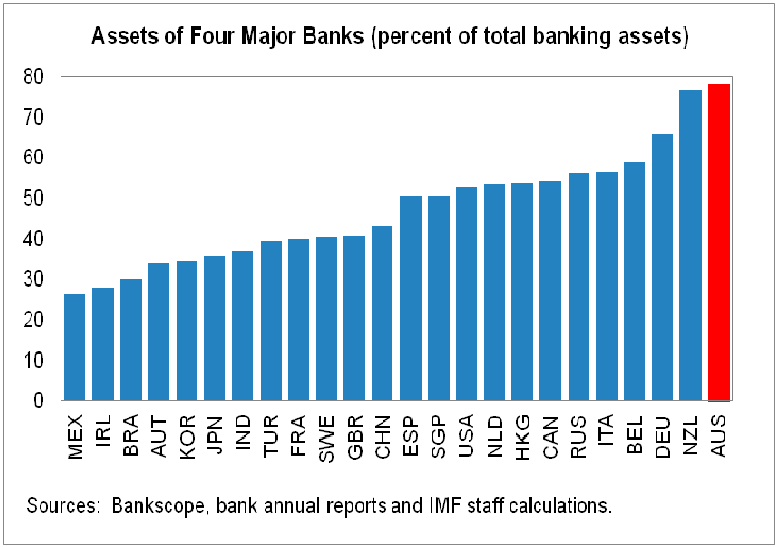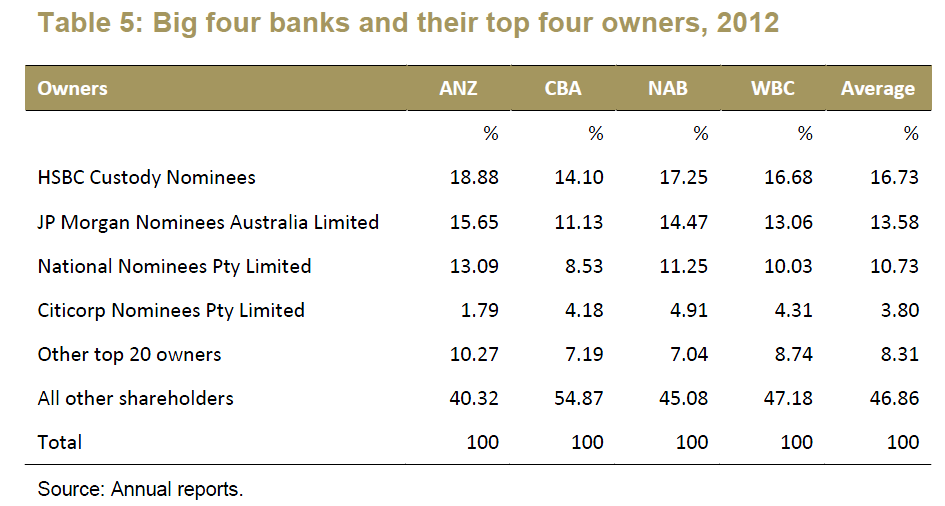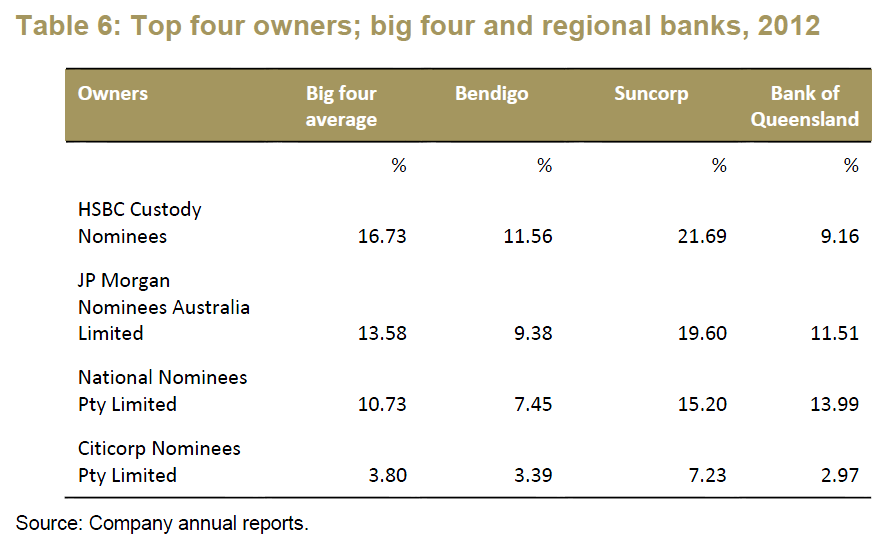It’s absolutely no news to readers that Australia’s big banks enjoy monopoly rents. And to that extent a new study by the Australia Institute, called The rise and rise of the big banks, is borderline hackneyed. If you’ve been living under a rock and were unaware of the lack of competition, then the following chart aught to clarify it for you:

Now that is what I call “too big to fail”!
But the study does actually break new ground in examining the ownership structures of the big banks, where is discovers an equally obvious concentration in the big four:

And the next tier of competition:

The study concludes:
With respect to price leadership, until recently the banks let the Reserve Bank act as the price leader but in February 2012 the ANZ took on that role. The dominance of the big four banks in the market makes it easier to develop informal understandings that they will not unilaterally reduce prices. But the decision by the NAB to break ranks was seen by some of its investors as a threat and they urged it to move back in line with the ‘competition’. To understand the degree of competition in the banking system it is important to understand bank ownership. This paper presents evidence on the pattern of bank ownership in Australia.
An inspection of the top 20 shareholders in the big four banks reveals a very interesting pattern. On average, over 53 per cent of each big bank is owned by shareholders that are among the top 20 shareholders in all the big banks. Most of the owners, and certainly the top four shareholders, are nominee companies. Nominee companies hold shares on behalf of other entities that for some reason want to hide their identity. They tend to be both foreign investors and fund managers; increasingly they are investors acting on behalf of superannuation funds.
The common ownership of the big four banks seriously challenges the idea that there are four separate big banks in Australia. Given the common ownership of the big banks, it is to be expected that the owners will put pressure on the banks to act as one and reap the monopoly profits. That seems to have been the motive of the investors who encouraged the NAB to move back in line with its competitors. Moreover, ownership figures for the second tier banks, the big three regionals, show they are also owned by the same organisations that own the big four.
I spend much of my time oscillating between the obvious need for a root and branch banking inquiry and the near certainty that said endeavour would be hijacked by vested interests and turned towards another round of competition that would result only in cheaper and more abundant credit, not cheaper banking services. This morning I side with the former.

